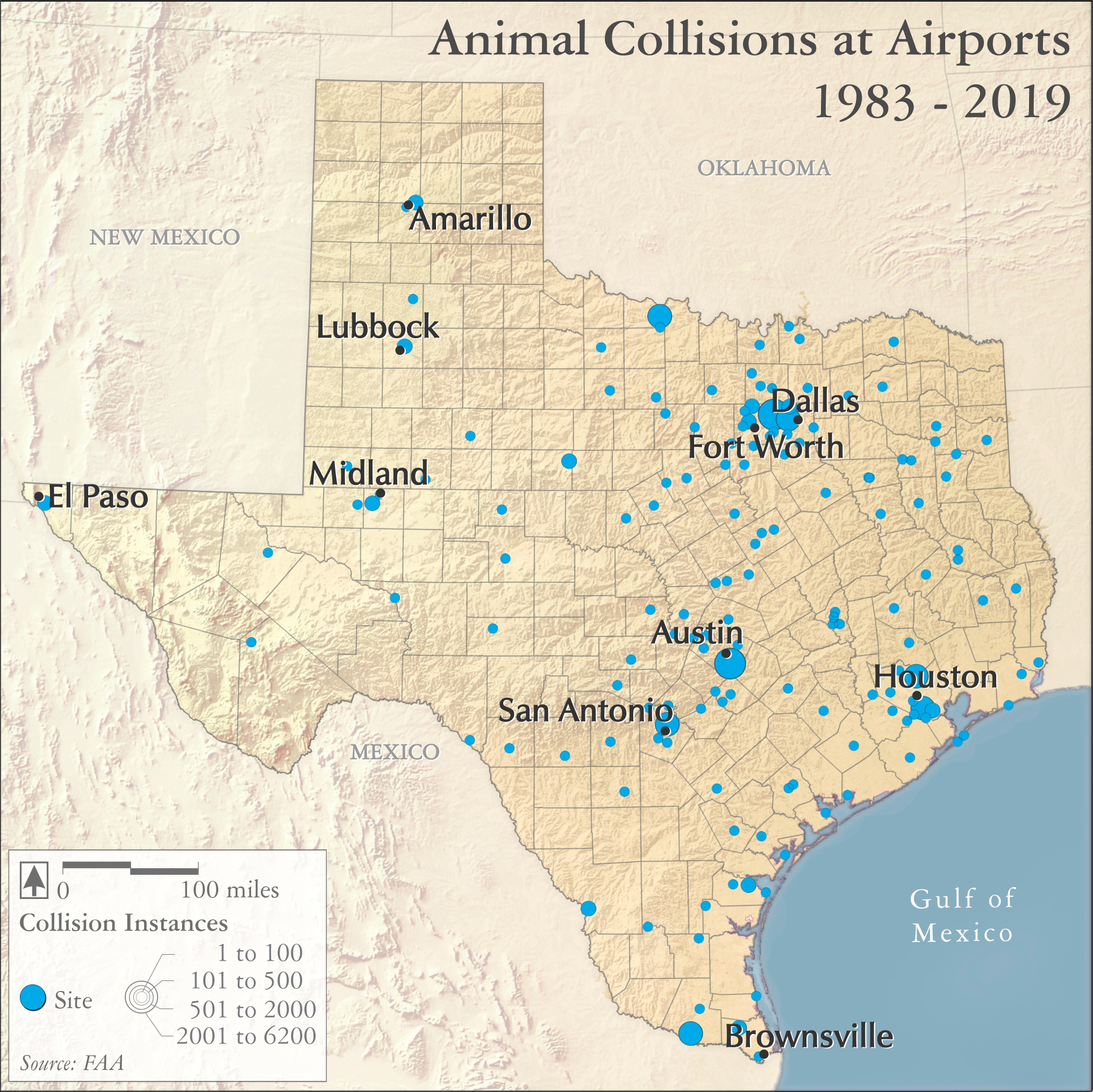
Animal collisions at airports
There are many subtle, gradual, though powerful stories of clashes between the human and animal world, between mechanical objects and living creatures.
However, one of the most clear, immediate and brutal conflicts are found in one well-documented area, within the bounds of the globe’s thousands of airports.
Over the past 30 years, 154 airports across Texas have seen more than 20,000 collisions between aircraft and wildlife, with a regular increase over time, rising from 214 in 1990 to 1553 in 2018. And this is likely a low estimate: the FAA estimates that its voluntary reporting system catches less than half of the strikes.
The greatest number of strikes have involved birds, including mourning dove (3253), eastern and western meadowlarks (782), pigeons (688), killdeer (601), barn swallows (421), scissor-tailed flycatchers (225), horned larks (196), upland sandpiper (180), and rare birds such as bald eagles (2) and peregrine falcons (13).
Mammals are struck as well. Planes have collided with black-tailed jackrabbits (147), Brazilian free-tailed bats (101), striped skunks (70), coyotes (66), white-tailed deer (33), and the vague but foreboding note, “cattle” (1).
Most of these encounters are fatal for the animal. In some cases, they are very serious for the machinery (21 destroyed aircraft) and people (12 injuries).
As one might suspect, the greatest number of strikes are found in the busier airports, including Dallas/Fort Worth (6190 reported collisions), Austin (2102), George Bush Intercontinental in Houston (1700), William P. Hobby in Houston (1476), Love Field in Dallas (1398), and San Antonio International (1305).
As for time, most strikes occur in the day (8512), and less so at night (3435), dusk (771), or dawn (508). Maybe this pattern reflects the number of flights, and the activity of the wildlife.
Aircraft/wildlife collisions peak in the summer (July – 2463, August – 2460, September – 2264), and trough in the winter (January – 639, February – 725, and December – 728).
Airports are working on ways to reduce the number of collisions. For instance, Love Field in Dallas has installed a new$1.2 million infrared and optical wildlife detection system. Dallas/Fort Worth hires a falconer to spook roosting birds, as well as sirens and propane cannons.
Sources:
Federal Aviation Administration. 2019. Emergency Plan Airports: Airports with Non-Water Runways 5000 Feet or More in Length, current as of 11/7/19. https://www.faa.gov/airports/airport_safety/airportdata_5010/menu/emergencyplanexport.cfm?Region=&District=&State=TX&County=&City=&Use=&Certification= (Accessed November 11, 2019).
Federal Aviation Administration. 2019. FAA Wildlife Strike Database. https://wildlife.faa.gov/search (Accessed November 11, 2019).
Orr, Jimmy. 2009. “Top Ten US Airports Reporting Wildlife-Aircraft Collisions. Christian Science Monitor. April 25, 2009.
